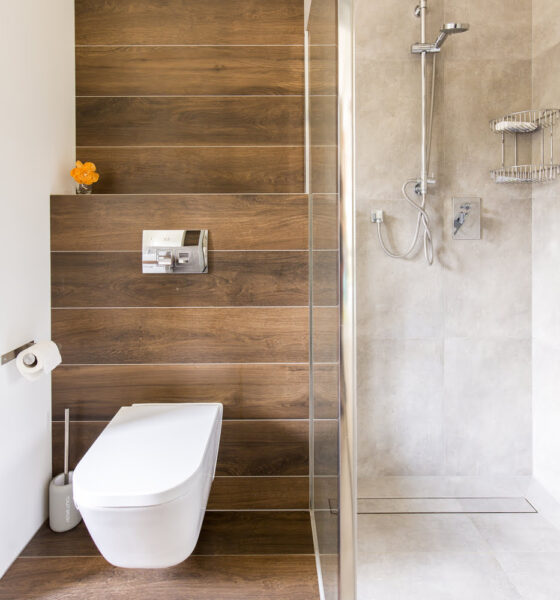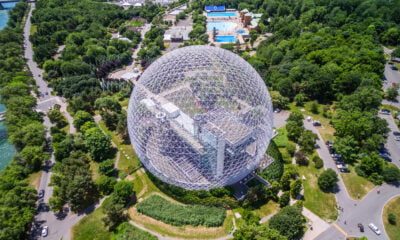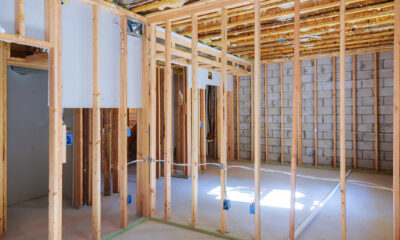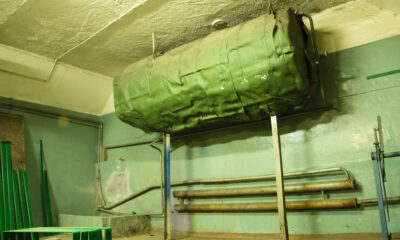

Environment
Eco-Friendly Guidelines to Minimize Public Bathroom Waste
Helping the environment is a very important goal that is filled with many little steps (and many big ones) we can take to do our part. One of these steps is preventing waste. Preventing waste can be done in many ways, whether it is removing waste caused by paper, plastic, water, or even electricity.
Many people are worried about taking steps to be more eco-friendly. Sometimes this concern is for cost reasons. Other times people are just unsure where to begin. Luckily, there are many different simple ways to start reducing waste.
You can start by focusing on your bathroom. Bathroom water will eventually be repurposed to help the planet, but you need to take some steps to make it eco-friendlier in the meantime. And some of them may even save you money.
Plan Before You Build Your Bathroom
Some of the best things you can do to help the environment in your public bathroom are choices you make before you even begin building. Beginning your pursuit of preventing waste from the very beginning can save you time and money.
Choosing fixtures that use less water is a great way to reduce water waste. This choice might include toilets that use less water per flush or sinks that only activate with motion. It is especially important to make sure your toilets are water efficient. Toilets account for 30% of indoor water use. Putting in a little extra upfront to save water and money down the line may be an excellent option for your bathroom.
Picking the right bathroom stalls is another way to help reduce waste. Certain partition materials are 100% recyclable after their lifespan, including HDPE Solid Plastic and Stainless Steel. This recyclable nature means that even when you replace the old stalls, they don’t have to end up in landfills where they pollute the environment.
These may not be the most practical tips if you already have a bathroom you are looking to renovate. But if you are still in the building phase, you may find these tips are what you need to get started reducing waste in your bathroom.
Hand-Dryers Versus Paper Towels
One of the biggest debates on waste management in a public bathroom is if bathrooms should use hand dryers or paper towels. Paper towels come with the intrinsic waste product of paper, while hand dryers have a more hidden cost of electricity usage.
Comparing manual and automatic hand dryers compounds this invisible cost. Manual hand dryers involve activating the dryer (usually by pressing a button) and letting it run for a set time. Automatic hand dryers only turn on when they sense hands in the proper location, making them more eco-friendly than manual dryers.
Paper Towels have their own invisible cost: time. Paper towels need to be restocked, taken out with the trash, and even unclogged from the toilet as people often flush them there. If you know that you will not have the most time to attend to your public bathroom, this hidden cost can be crucial.
So, what is the best choice from a purely environmental standpoint? Conflicting studies produced by hand dryer companies and paper towel conglomerates complicate the conversation. However, it seems to be that overall hand dryers are the better choice. Even with the materials used to make them, hand dryers cause less of a negative impact on the environment than all the paper waste associated with paper towels.
Electricity and Water Waste
We have already discussed how hand dryers use electricity and that motion-sensing sinks can save water. But what are some other sources of energy and water waste?
For electricity, a common source of waste is the lights. Buying energy-saving bulbs is a great way to reduce this waste. But there is another more simple way to do this: turn off the lights. In many places, buildings leave bathroom lights on even after hours. Just turning off those lights before you lock up can be a great way to save energy. If you want to go a step further, consider motion-sensing lights. Purchasing new lights is a little more intensive but enables you to spend electricity on them only when someone is in the bathroom.
Another worthy recommendation for people looking to reduce waste is to make sure you check for leaks frequently. Not only does a leaky faucet or pipe cause wasted water and potentially damage to your bathroom, but it can also be a financial cost. If you see an unusually high water bill or leaking from one of your fixtures, make sure to deal with it quickly to help not only the environment but yourself as well.
Cleaning Your Bathroom
Perhaps the simplest thing you can do to prevent waste in your bathroom is to make sure you are cleaning the bathroom right. There are a couple of ways you can do this that are simple and cheap.
The first is to make sure you clean your bathroom with safe materials. Some fixtures can survive just about anything. However, others, especially stalls, need to be cleaned with specific substances and tools. Using abrasive cleaners or wire sponges can scratch or deteriorate your stalls. Some bathroom partitions are waterproof, but others can develop rust and mold if you do not dry them adequately. Cleaning your stalls the right way for their material can make years of difference in how long they last. And the less you have to throw away and reinstall anything, whether it is your stalls or fixtures, the less waste you make.
The other way to reduce waste while cleaning is making sure you are using eco-friendly cleaners. Advertisers may helpfully label them as non-toxic or biodegradable, but it is always a good idea to look at the ingredients. With some research, you may find a cleaner you love that will help you keep your bathroom sparkling and environmentally conscious.
Begin Transforming Your Bathroom Today
While becoming an eco-friendly establishment can seem daunting, just a few small steps in a single room can make a difference. In the bathroom, there are so many ways to begin.
Maybe you are building for the first time and looking for stalls or fixtures. Or maybe, you are just trying to update your current bathroom to be eco-friendlier. Regardless of your reason, we hope you will consider taking one or more of these steps today to get you started on your journey towards becoming more environmentally friendly.


 Environment10 months ago
Environment10 months agoAre Polymer Banknotes: an Eco-Friendly Trend or a Groundswell?

 Environment11 months ago
Environment11 months agoEco-Friendly Home Improvements: Top 7 Upgrades for 2025

 Features9 months ago
Features9 months agoEco-Friendly Cryptocurrencies: Sustainable Investment Choices

 Features10 months ago
Features10 months agoEco-Friendly Crypto Traders Must Find the Right Exchange





























